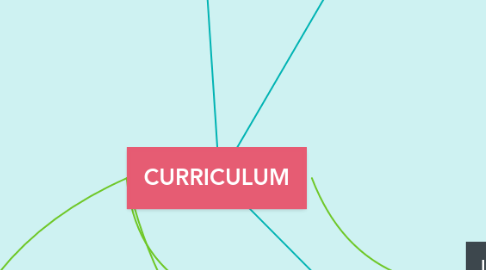
1. TWO POINTS OF VIEW OF CURRICULUM
1.1. 1. Traditional Points of View of Curriculum
1.1.1. Arthur Bestor as an essentialist, believe that the mission of the school should be intellectual training, hence curriculum should focus on the fundamental intellectual disciplines of grammar, literature and writing. It should also include mathematics, science, history and foreign language.
1.1.2. In the early years of 20th century, the traditional concepts held of the “curriculum is that it is a body of subjects or subject matter prepared by the teachers for the students to learn”. It was synonymous to the “course of study” and “syllabus”
1.1.3. Robert M. Hutchins views curriculum as “permanent studies” where the rule of grammar, reading, rhetoric and logic and mathematics for basic education are emphasized.
1.2. 2. Progressive Points of View of Curriculum
1.2.1. On the other hand, to a progressivist, a listing of school, subjects, syllabi, course of study, and list of courses or specific discipline do not make a curriculum. These can only be called curriculum if the written materials are actualized by the learner. Broadly speaking, curriculum is defined as the total learning experiences of the individual.
1.2.2. This definition is anchored on John Dewey’s definition of experience and education. He believed that reflective thinking is a means that unifies curricular elements. Thought is not derived from action but tested by application
1.2.3. Caswell and Campbell viewed curriculum as “all experiences children have under the guidance of teachers”. This definition is shared by Smith, Stanley and Shores when they defined “curriculum as a sequence of potential experiences set up in the schools for the purpose of disciplining children and youth in group ways of thinking and acting
2. In its narrow sense, curriculum is viewed merely as a listing of subject to be taught in school
2.1. is as dynamic as the changes that occur in society.
3. In a broader sense, it refers to the total learning experiences of individuals not only in schools but in society as well.
4. Types of Curriculum Operating in Schools
4.1. 1) Recommended curriculum
4.1.1. Proposed by scholars and professional organizations
4.2. 2) Written curriculum
4.2.1. Appears in school, district, division or country documents
4.3. 3) Taught curriculum
4.3.1. What teachers implement or deliver in the classrooms and schools
4.4. 4) Supported curriculum.
4.4.1. Resources textbook, computers, audio visual materials which support and help in the implementation of the curriculum.
4.5. 5) Assessed curriculum
4.5.1. That which is tested and evaluated
4.6. 6) Learned curriculum
4.6.1. What the students actually learn and what is measured and
4.7. 7) Hidden curriculum
4.7.1. The unintended curriculum.
